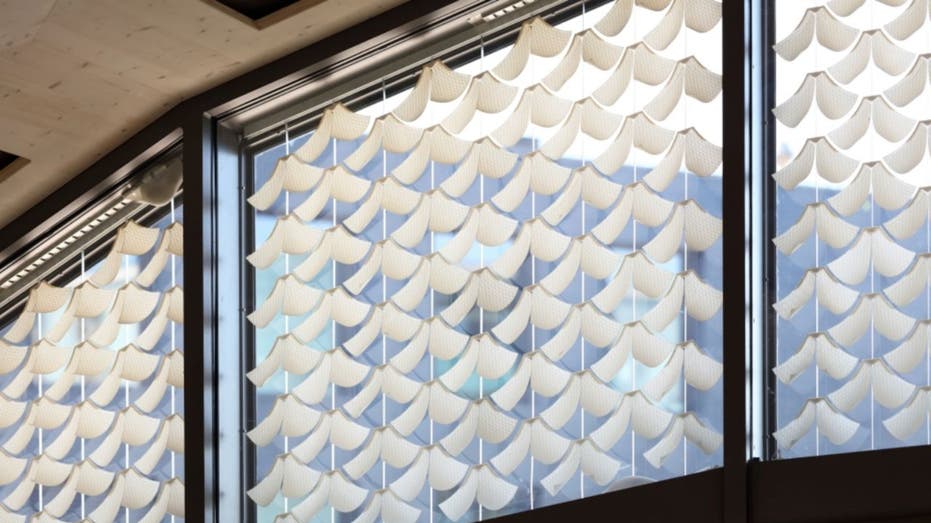Smart Windows Inspired by Nature: The Pinecone Effect

Have you ever marveled at how a pinecone opens and closes in response to environmental changes? This intriguing natural phenomenon is not a result of magic; rather, it’s a fascinating aspect of science. Researchers have drawn inspiration from this mechanism to develop innovative window technology that promises to enhance the comfort of our homes without consuming any electricity.
Understanding the Pinecone Mechanism
Pinecones possess unique scales that react to moisture levels. When the air is damp, they tightly close to protect their seeds, but when it’s warm and dry, they open up to disperse them. This brilliant natural design has led scientists to create a smart window system that aims to transform energy efficiency in buildings.
Introducing the Solar Gate Window Facade System
A team of scientists from the universities of Stuttgart and Freiburg in Germany has pioneered a groundbreaking invention known as the Solar Gate window facade system. Imagine having miniature pinecones integrated into your windows! These smart windows feature specialized elements that respond to changes in temperature and humidity. When the conditions are cool and moist, the elements curl up to allow sunlight in, while in hot and dry weather, they flatten out, effectively blocking the sun’s rays and keeping your indoor space cool.
How the Solar Gate System Works
The Solar Gate system is ingeniously designed with an array of pinecone-inspired self-bending elements, which are enclosed between two panes of glass in an aluminum window frame. Each element consists of three distinct layers, each serving a unique purpose.
1. **Bottom Layer**: Composed of a blend of cellulose powder and thermoplastic, this layer swells when exposed to moisture.
2. **Middle Layer**: Made from thermoplastic, this layer is unaffected by moisture, providing structural integrity.
3. **Top Layer**: Flexible biocomposite filaments hold the entire structure together.
When humidity rises, the bottom layer expands, causing the element to curl upwards. In contrast, dry conditions lead the element to revert to a flat position. This automatic response to weather changes allows the windows to optimize shading and light entry as required.
Real-World Testing and Results
The Solar Gate system underwent extensive real-world testing to validate its effectiveness. Researchers installed 424 Solar Gate elements in the south-facing skylight of a research building at the University of Freiburg for a year-long study. The results were remarkable.
During the cooler, wetter winter months, the elements curled up, allowing natural sunlight to illuminate and warm the building’s interior. This significantly reduced the reliance on artificial heating and lighting. As the seasons transitioned to warmer, drier conditions, the elements automatically flattened, blocking excess sunlight and maintaining a comfortable indoor temperature without the need for energy-intensive air conditioning.
Broader Applications of Biomimetic Technology
The innovative principles behind the Solar Gate system extend beyond just window applications. Researchers are exploring similar biomimetic concepts across various fields. For example, they are investigating shading systems using wooden slats that adjust based on environmental conditions. In textiles, scientists are developing “smart” fabrics that can adapt to temperature fluctuations, ensuring comfort for wearers. Even in robotics, tiny mobile robots are being designed to respond to environmental stimuli, inspired by natural mechanisms.
The Future of Sustainable Design
Nature continues to inspire cutting-edge solutions, and the Solar Gate window system exemplifies how we can leverage these designs for practical applications. By mimicking the adaptive qualities of pinecones, scientists are paving the way for technologies that could revolutionize energy efficiency in buildings. The prospect of homes and offices that intelligently adjust to their surroundings, much like living organisms, is an exciting glimpse into the future of sustainable design.
Would you be comfortable with windows that automatically adjust based on moisture and temperature without relying on electrical controls? Share your thoughts with us!
For more insights on technology and security, consider subscribing to our newsletter for updates and tips!




